
Author: Natalie Ng|Updated: 30 April 2025
If you’ve noticed more hair strands on your pillow, in the shower, or stuck in your brush as the seasons change, you're not imagining it. Seasonal hair fall is real — and surprisingly common. During seasonal changes, especially in autumn and spring, your body reacts to shifts in temperature and daylight. These changes affect your hair growth cycle, causing more hair follicles to enter the resting phase (also known as the telogen phase). That leads to increased seasonal hair shedding, even if you're following a normal hair care routine. Most people lose around 50–100 hairs a day, but seasonal shedding can push that number higher. It’s part of the natural hair growth cycle, but that doesn’t mean there’s nothing you can do. Simple changes in your routine and awareness of what’s going on beneath the surface can help reduce excessive hair shedding and support healthy hair growth over time. Want to know why it happens, how long seasonal hair loss usually lasts, and what actually works to strengthen hair and promote hair growth? Keep reading.

Causes of Seasonal Hair Loss
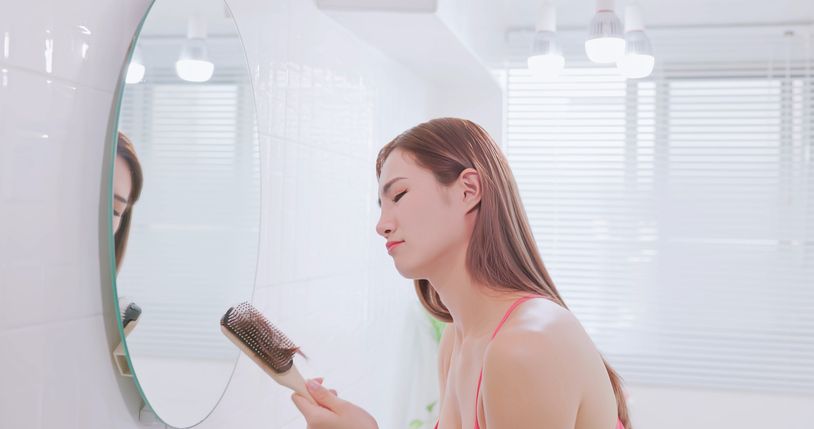
Your Hair Reacts to Light and Temperature Changes
As the seasons shift, your body responds to changes in daylight and temperature. This affects your natural hair growth cycle and leads to more hair entering the resting phase, also known as the telogen phase. Seasonal hair fall usually peaks in late summer and early autumn. It can also happen again in spring.
Hair Follicles Enter the Resting Phase
Your hair grows in cycles. Each strand goes through a growth phase (anagen), a transition phase (catagen), and a resting phase (telogen). During seasonal hair shedding, more hair follicles than usual move into the resting phase. After a few weeks, these hairs fall out as part of the shedding phase. This is why you see more hair fall around seasonal changes.
This process is normal
Seasonal shedding is part of how your body adjusts to the environment. It doesn’t mean your hair is damaged or that you’re going through permanent hair loss. Most of the time, new hair begins growing again in the same follicles, supporting a continuous hair growth cycle.
Hormones Also Affect Shedding
Your hormones shift slightly with changes in daylight. Melatonin and prolactin, which respond to light exposure, can influence hair follicle activity. These hormonal changes may trigger increased shedding during certain seasons.
Understanding how your body responds during seasonal changes helps you manage expectations. Seasonal hair loss is temporary. With proper hair care and support for healthy hair growth, you can reduce excessive hair shedding and keep your hair healthy through every cycle.

The Natural Hair Growth Cycle and Seasonal Changes
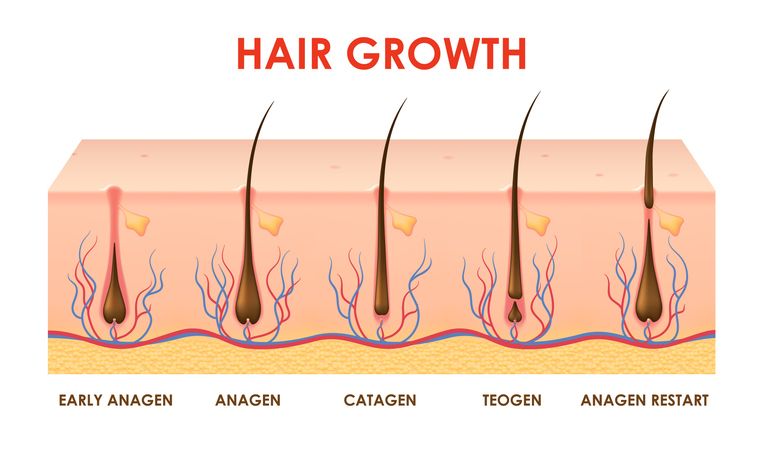
Hair’s Three Growth Phases
Your hair doesn’t grow all at once — each strand moves through a cycle of growth, rest, and shedding. This is called the hair growth cycle and it has three phases:
• Anagen (Growth phase): This is when your hair actively grows. It lasts between 2 to 7 years and around 90% of your hair is in this phase at any given time. During this phase, your hair can grow about half an inch per month.
• Catagen (Transition phase): This short phase lasts about 2 to 3 weeks. Hair growth stops, and the hair follicle begins to shrink. Only a small percentage of your hair is in this phase at once.
• Telogen (Resting and shedding phase): This phase lasts roughly 3 months. At the end of it, the hair strand falls out and a new one starts to grow from the same follicle. You’ll naturally lose 50–100 hairs per day during this phase.
How Seasons Affect the Hair Cycle
When seasons change — especially moving into autumn or spring — more hair follicles than usual can enter the telogen phase at the same time. This creates a visible increase in daily hair fall, often referred to as seasonal hair shedding. The changes in daylight and temperature affect your scalp and hair follicles, triggering this shift.
Seasonal shedding is temporary, and it usually balances out once your hair follicles return to their regular pattern. If you experience more strands falling than usual during seasonal changes, it's often your body adjusting — not a sign of permanent hair loss.
Understanding this natural rhythm can help you respond to seasonal hair fall with proper hair care, better scalp health support, and the right steps to protect your hair and promote hair growth year-round.
Read More
Book Now to Experience
F8 Hair Regrowth Treatment
1 Minute Self-Registration
Date should not be before minimal date

Seasons Impact Hair Shedding
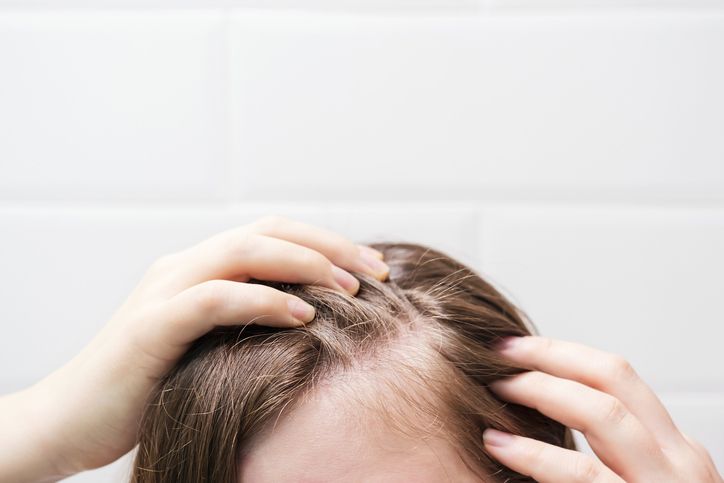
Seasonal Changes Trigger Hair Follicle Response
Your hair and scalp react to shifts in temperature and sunlight throughout the year. Research shows that more people report increased hair shedding during late summer and early fall. This is when many hair follicles shift into the telogen phase — a resting period in the hair cycle — which causes more hair strands to fall out over a short period.
Why It Happens
During summer, your body may send more follicles into the resting phase as a way to protect your scalp from increased sun exposure and heat. These hairs remain in the telogen phase for several weeks before falling out in autumn. This delayed reaction is what causes visible seasonal hair fall as the weather begins to cool.
In winter, another milder shedding cycle can happen. While not as intense as autumn, it may still lead to noticeable thinning hair for some people. This is part of the body’s natural adjustment to different environmental conditions.
It’s a Protective Mechanism
This cycle has a purpose — it helps regulate scalp health and protect your head from temperature extremes. Although it may feel like excessive hair loss, this type of shedding is part of a normal biological response and doesn’t usually lead to long-term thinning.
Seasonal hair loss typically resolves on its own, but if shedding seems prolonged or more severe than expected, it’s important to look at other possible causes or triggers, which we'll cover in the next section.

Normal vs. Excessive Hair Loss
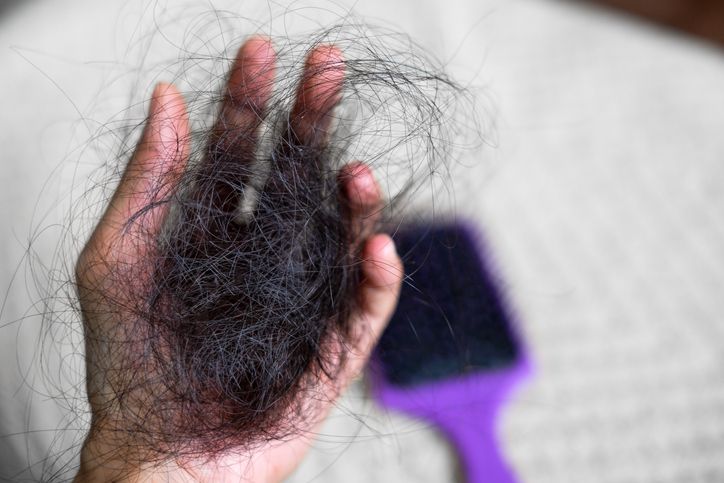
What Counts as Normal Shedding
Losing 50 to 100 hair strands per day is considered part of the natural hair cycle. During seasonal shifts, this number may rise slightly — especially in autumn and spring — due to more hair follicles entering the telogen phase. This increase is usually temporary and doesn't affect overall hair density.
If your hair still feels full and your scalp isn't more visible, you're likely experiencing normal seasonal hair shedding. You’ll often see this type of hair fall during brushing, washing, or styling, and it shouldn’t involve large clumps or sudden changes in hair texture.
Signs of Excessive Hair Loss
When hair fall exceeds 150 strands daily or comes out in large amounts during washing or combing, it may point to excessive shedding. Other signs include:
• Thinning at the crown or widening part lines
• Noticeable bald patches
• Hair coming out in clumps
• Increased scalp visibility
• Slower regrowth after hair loss
These symptoms suggest there may be an issue beyond seasonal hair fall. If you see these changes lasting more than a few weeks, it could be related to a disrupted hair growth cycle, poor scalp health, or an underlying condition such as telogen effluvium or hormonal imbalances.
Tracking your hair fall pattern and paying attention to changes in volume or density helps you catch early signs of excessive hair loss — and take action before it worsens.
Book Now to Experience
F8 Hair Regrowth Treatment
1 Minute Self-Registration
Date should not be before minimal date

Common Triggers for Increased Hair Shedding
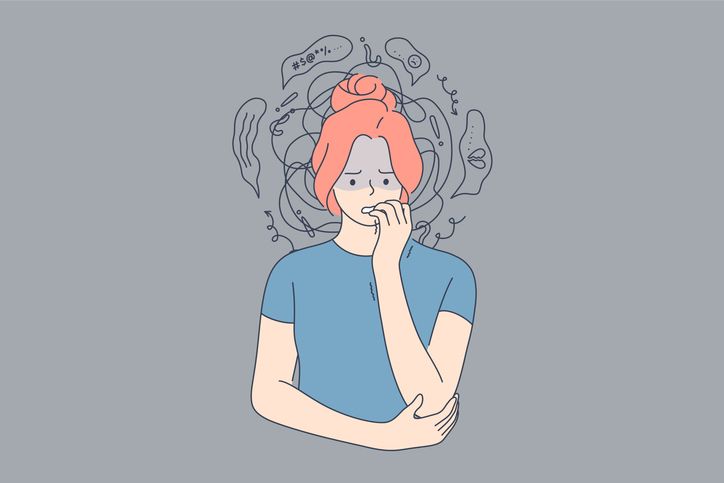
Stress Affects the Hair Growth Cycle
Chronic stress can interrupt the natural hair growth cycle by forcing more follicles into the telogen phase too early. This condition, known as telogen effluvium, often causes sudden or noticeable hair shedding a few weeks to months after a stressful event. Stress affects hormone levels, blood flow, and even the delivery of essential nutrients to hair roots, all of which impact hair health.
Hormonal Changes Disrupt Hair Balance
Fluctuations in hormones — such as during pregnancy, postpartum recovery, menopause, or thyroid issues — can lead to excessive shedding. Hormones play a direct role in regulating the hair growth cycle. When this balance is disrupted, it can lead to more strands entering the resting phase too soon, which increases seasonal hair fall and hair thinning.
Nutritional Deficiencies Weaken Hair Follicles
Your hair needs a steady supply of nutrients to stay strong. A lack of protein, iron, vitamin D, biotin, or zinc can make hair strands more fragile and slow the growth cycle. Diets that are low in essential nutrients often result in weaker follicles, slower regrowth, and increased shedding. This is especially common during seasonal changes when your body’s nutrient demands may shift slightly.
Environmental Stress and Daily Habits
External factors also impact hair health. Common culprits include:
• Excessive heat styling with flat irons or curling tools
• Harsh chemical treatments such as bleaching or perming
• Tight hairstyles that pull on the roots
• Overexposure to sun, wind, or chlorinated water
These habits can damage hair structure and roots, leading to breakage and more hair loss. Combined with seasonal changes, they may push your hair beyond the usual limits of natural shedding.
Medical Conditions Can Also Play a Role
Conditions like thyroid disorders, autoimmune diseases, or scalp infections often cause excessive hair loss. These trigger inflammation or disrupt the growth cycle, leading to sudden or patchy shedding. If you suspect an underlying medical issue, it’s important to consult a healthcare provider for proper diagnosis and treatment.
Recognizing these triggers gives you a clearer picture of what might be causing your hair to shed more than usual — and what changes you can make to strengthen hair and support healthy growth.

Essential Nutrients to Combat Seasonal Hair Fall

Biotin Supports Stronger Hair Strands
Biotin, also known as vitamin B7, plays a key role in forming keratin — the main protein that makes up your hair. Low levels of biotin can weaken hair structure, making strands more prone to breakage and shedding. You can find biotin in foods like eggs, sweet potatoes, nuts, and seeds, or take it as a supplement if your intake is low.
Iron Promotes Blood Flow to Hair Follicles
Iron helps red blood cells carry oxygen to your hair cells. Without enough iron, your follicles may not get the oxygen they need to support healthy hair growth. This can lead to thinning hair or excessive hair shedding. Leafy greens, lentils, red meat, and fortified cereals are good sources of iron.
Vitamin D Affects Follicle Activation
Vitamin D helps “wake up” dormant hair follicles and may play a role in new hair growth. Many people have low levels, especially during colder months when sun exposure drops. Getting safe sun exposure or eating foods like salmon and fortified milk can help maintain healthy levels. If you're deficient, your doctor might recommend a supplement.
Zinc Keeps Scalp and Hair Tissue Healthy
Zinc helps repair hair tissue and supports the oil glands around follicles. Without enough zinc, the scalp may become dry or irritated, which can impact the hair cycle. You can boost your intake with pumpkin seeds, chickpeas, or whole grains.
Omega-3s Reduce Scalp Inflammation
Omega-3 fatty acids nourish hair follicles and help reduce inflammation in the scalp, which supports a healthy environment for hair growth. Sources include fatty fish like salmon, flaxseeds, walnuts, and chia seeds.
Getting enough of these essential nutrients through a balanced diet helps keep your hair cycle stable, reduce excessive seasonal hair shedding, and promote stronger, healthier hair over time.
Book Now to Experience
F8 Hair Regrowth Treatment
1 Minute Self-Registration
Date should not be before minimal date

Lifestyle Adjustments for Healthier Hair

Manage Stress to Support Hair Health
Chronic stress impacts your hormone levels and blood circulation, both of which affect hair follicles. High stress levels can trigger early entry into the telogen phase, leading to more hair fall. Building habits like regular exercise, proper rest, and setting clear work-life boundaries can help lower stress and support a stable hair growth cycle.
Avoid Tight Hairstyles and Heat Styling
Wearing your hair in tight ponytails, buns, or braids every day pulls on the roots and weakens the follicles over time. This can lead to traction-related hair thinning. Similarly, frequent use of flat irons, curling tools, or blow dryers — especially at high temperatures — damages the outer layer of hair, causing breakage and dryness. Loosen your styles and limit heat tools to prevent unnecessary hair shedding.
Protect Hair from Environmental Damage
Seasonal changes often bring harsh weather — intense sun, cold winds, or dry indoor heating — that can dry out your scalp and weaken hair strands. Wear a hat or scarf in extreme weather and use UV-protective sprays when spending long hours under the sun. This small step helps protect your hair and scalp from environmental stress.
Upgrade Your Sleep Routine
Your pillowcase can affect your hair just as much as your shampoo. Cotton pillowcases create friction that leads to breakage. Switching to a silk or satin pillowcase reduces friction and keeps your hair smooth overnight. It also helps maintain the natural oils that protect your strands.
Improve Scalp Circulation with Massage
Gentle scalp massages encourage blood flow to the roots, which brings more oxygen and nutrients to your hair follicles. Using natural oils like coconut, argan, or jojoba during the massage adds moisture and supports overall scalp health. You can do this a few times a week before washing your hair.
Use Gentle Hair Care Practices
Use lukewarm water when washing your hair — hot water can dry out both your scalp and strands. Choose a gentle shampoo and avoid aggressive scrubbing. After washing, pat your hair dry with a towel instead of rubbing it. These small changes reduce damage and help prevent unnecessary shedding.
Trim Regularly to Prevent Breakage
Split ends can travel up the hair shaft and cause more breakage. Getting regular trims — even just a small cut every 6 to 8 weeks — keeps your ends clean and helps maintain the overall health and appearance of your hair.
Together, these changes help strengthen your hair from root to tip, reduce the effects of seasonal shedding, and maintain a healthier, more stable hair cycle throughout the year.

Professional Treatments and Medical Solutions
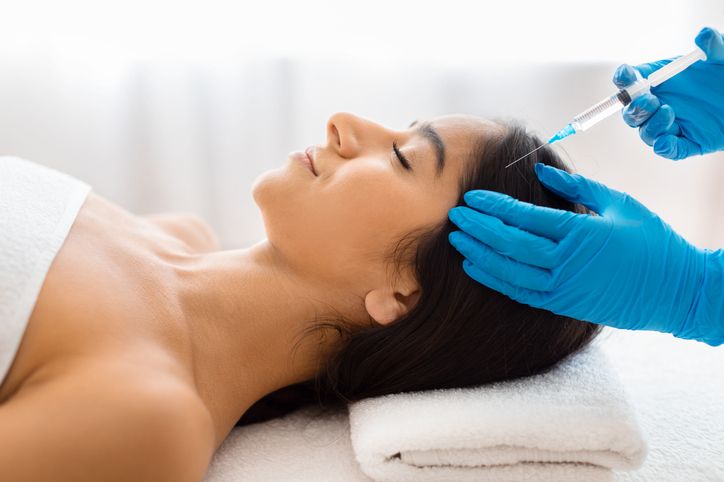
Dermatologist-Recommended Hair Therapy
If lifestyle changes and proper hair care don’t slow down seasonal hair loss, you may want to consider professional treatments. Dermatologists can offer targeted solutions that support hair follicles and improve scalp health.
Here are common options:
• Platelet-Rich Plasma (PRP) Therapy: A small amount of your blood is processed to concentrate platelets, which are then injected into your scalp. This helps stimulate inactive follicles and may promote hair growth.
• Low-Level Laser Therapy (LLLT): These devices use light energy to improve blood circulation in the scalp and boost cell activity in hair follicles. LLLT is non-invasive and can be done at home or in a clinic.
• Mesotherapy: A mix of vitamins, amino acids, and other nutrients is injected directly into the scalp to nourish follicles and support stronger hair.
• Scalp Micropigmentation: While it doesn’t stop hair fall, this non-invasive cosmetic procedure creates the appearance of thicker hair by adding tiny pigment dots to the scalp.
These treatments aim to restore balance to the hair cycle and reduce the appearance of thinning hair. They’re especially helpful for people experiencing seasonal hair loss that doesn’t improve with standard care.
Medications for Hair Loss
In some cases, doctors may recommend FDA-approved medications:
• Minoxidil: A topical solution or foam applied to the scalp to increase blood flow and extend the growth phase. It’s widely used for both men and women experiencing hair thinning or excessive shedding.
• Finasteride: An oral prescription medication for men that lowers DHT, a hormone linked to hair loss. It can help slow shedding and improve density over time.
• Spironolactone: Often prescribed to women, this medication helps balance hormones and may reduce hair thinning caused by androgen sensitivity.
If you're dealing with persistent or severe seasonal hair loss, combining these medical options with a healthy routine can make a noticeable difference in both hair quality and overall growth.

Addressing Seasonal Hair Fall with New Beauty’s F8 Hair Regrowth Treatment
If you're dealing with seasonal hair fall and feel like regular care isn’t making enough of a difference, professional support can help. One treatment designed to support scalp health and promote healthy hair growth during seasonal changes is the F8 Hair Regrowth Treatment.
How the F8 Treatment Supports Seasonal Hair and Scalp Needs
Seasonal hair shedding often occurs when more hair follicles enter the telogen phase at once. This can make your hair look thinner and feel weaker. The F8 Hair Regrowth Treatment helps by stimulating inactive hair follicles and improving blood circulation in the scalp — two key factors that support healthy hair growth and reduce excessive hair shedding.
How the F8 Hair Regrowth Treatment Works
The treatment uses low-energy laser technology combined with a nourishing hair growth serum. Here’s what happens during a session:
1. Scalp and Hair Assessment: A professional examines your scalp using high magnification to understand the condition of your hair follicles and pinpoint areas of thinning.
2. Laser Stimulation: The therapist applies low-energy laser light across the scalp. This process activates hair papilla cells and strengthens nearby capillaries, improving nutrient supply to hair follicles.
3. Serum Application: A growth-supporting serum is applied to the scalp. The laser improves absorption, allowing the serum to cleanse the scalp, reduce sebum buildup, and hydrate the skin. This helps create a healthy foundation for stronger, more vibrant hair.
Benefits of the F8 Hair Regrowth Treatment
• Non-invasive: No surgery, no wounds, and no downtime — safe for both men and women.
• Improves scalp condition: Unclogs pores, reduces oil buildup, and hydrates the scalp.
• Boosts blood circulation: Helps deliver essential nutrients to the roots to promote hair growth and strengthen hair follicles.
• Suitable during seasonal shifts: Supports the scalp through periods of increased shedding and helps prevent excessive hair loss.
Whether you're trying to prevent seasonal shedding or support thinning hair during peak shedding months, this treatment provides a structured and gentle way to care for your scalp and hair roots.
Ready to support your hair through seasonal changes? Book your session of F8 now and take the next step toward healthier, stronger hair.
New Beauty's F8 Hair Regrowth TreatmentBook Now to Experience
F8 Hair Regrowth Treatment
1 Minute Self-Registration
Date should not be before minimal date
FAQ
Can Seasonal Hair Loss Cause Permanent Baldness if Left Untreated?
You won't develop permanent baldness from seasonal hair loss alone. It's a natural cycle where your hair sheds more during certain times of the year, typically fall and spring. While it might feel concerning, your hair follicles remain healthy and active during this process. However, if you're worried about excessive shedding, you can strengthen your hair through proper nutrition and gentle hair care practices.
Does Coloring or Styling Hair During Seasonal Shedding Make Hair Loss Worse?
Your hair becomes more vulnerable during shedding periods. While coloring and styling won't directly cause permanent damage to your follicles, these chemical and mechanical stresses can weaken your already fragile strands. You'll want to embrace gentler styling methods and skip the dye jobs until your seasonal shedding subsides. Consider this your hair's natural time for rest and renewal.
How Long Does Seasonal Hair Shedding Typically Last Before Returning to Normal?
You'll typically notice seasonal shedding lasting about 2-3 months before your hair growth cycle returns to normal. During fall months, you might experience increased shedding from September to November, while spring shedding often occurs between March and May. Don't worry - this is your body's natural response to changing daylight hours and temperatures. Your hair will naturally reset its growth cycle once the seasonal shift completes.
Are Certain Hair Types More Susceptible to Seasonal Hair Loss?
If you've got fine or thinning hair, you'll notice seasonal shedding more prominently. Curly and coarse hair types can appear more affected since shed strands often get tangled within your locks instead of falling freely. Your ethnicity plays a role too - Asian hair typically shows less seasonal variation than European or African hair types.
Should I Change My Shampoo or Conditioner During Seasonal Hair Shedding Periods?
You might want to switch to a gentler shampoo and conditioner during shedding periods to minimize additional stress on your hair. Look for products with strengthening ingredients like biotin, keratin, or natural oils. Don't forget to avoid harsh sulfates and chemicals that can weaken your strands. If you're already using a mild formula, you can stick with it - just make sure you're not overwashing or using hot water.
Recommended Articles
COPYRIGHT© NEW BEAUTY MANAGEMENT LIMITED 2025. ALL RIGHT RESERVED.




